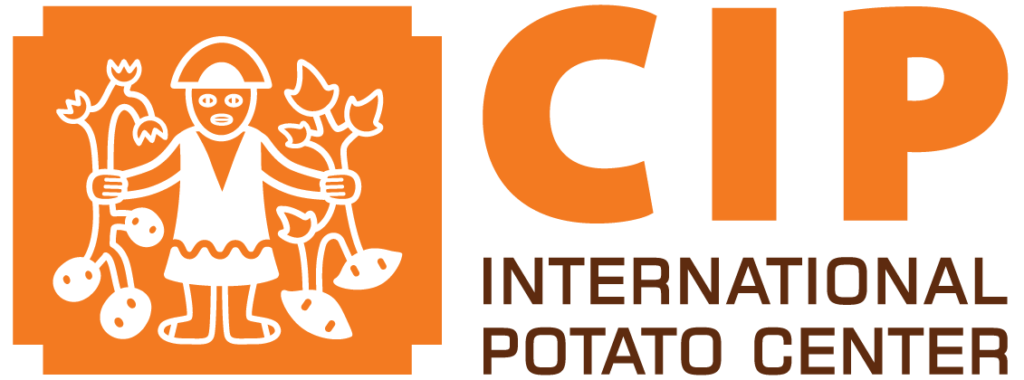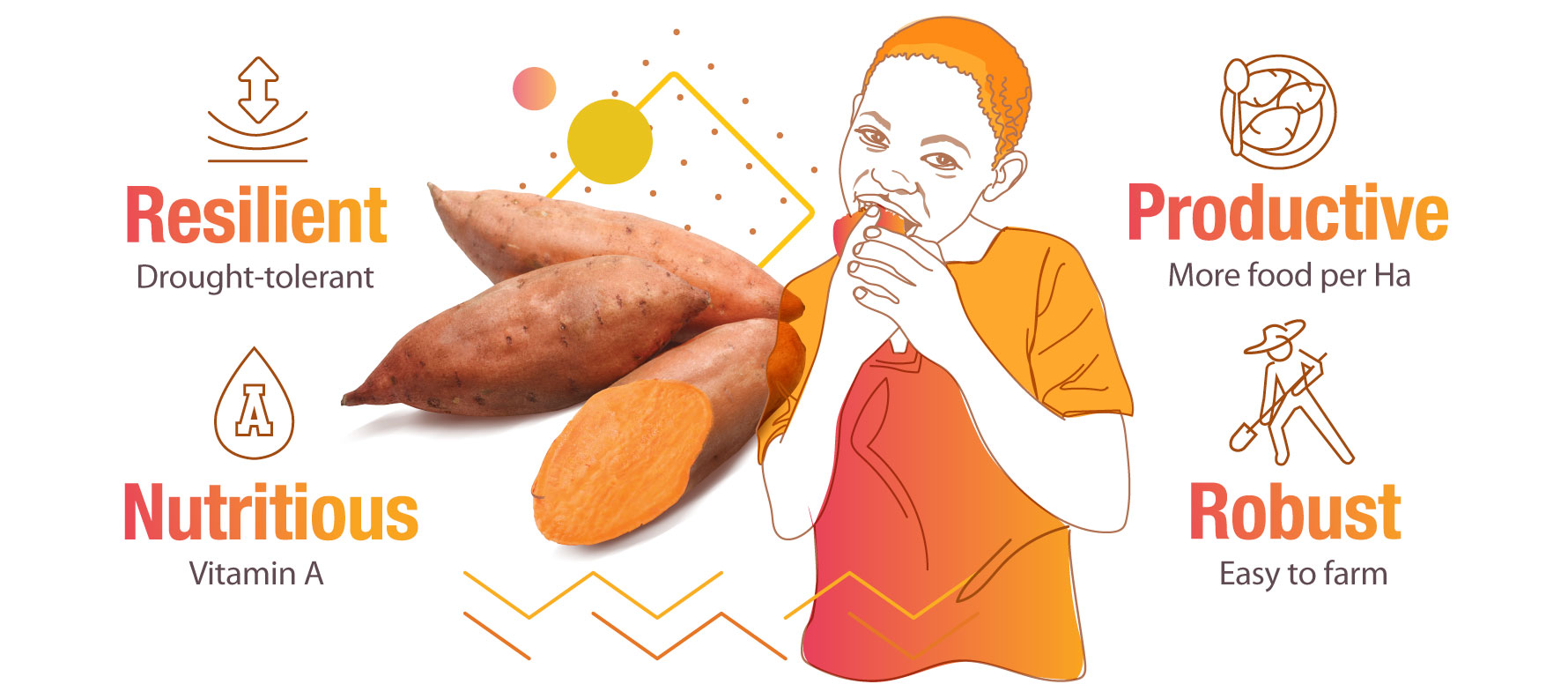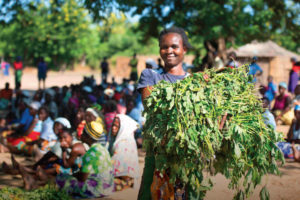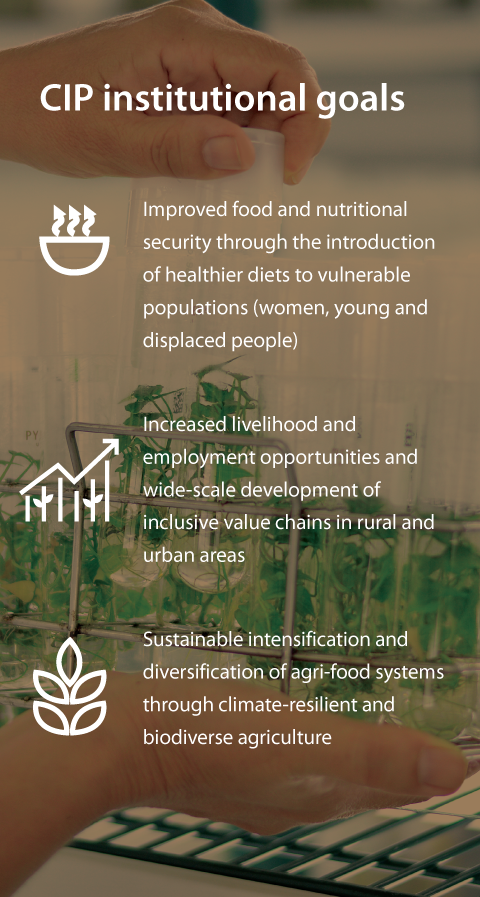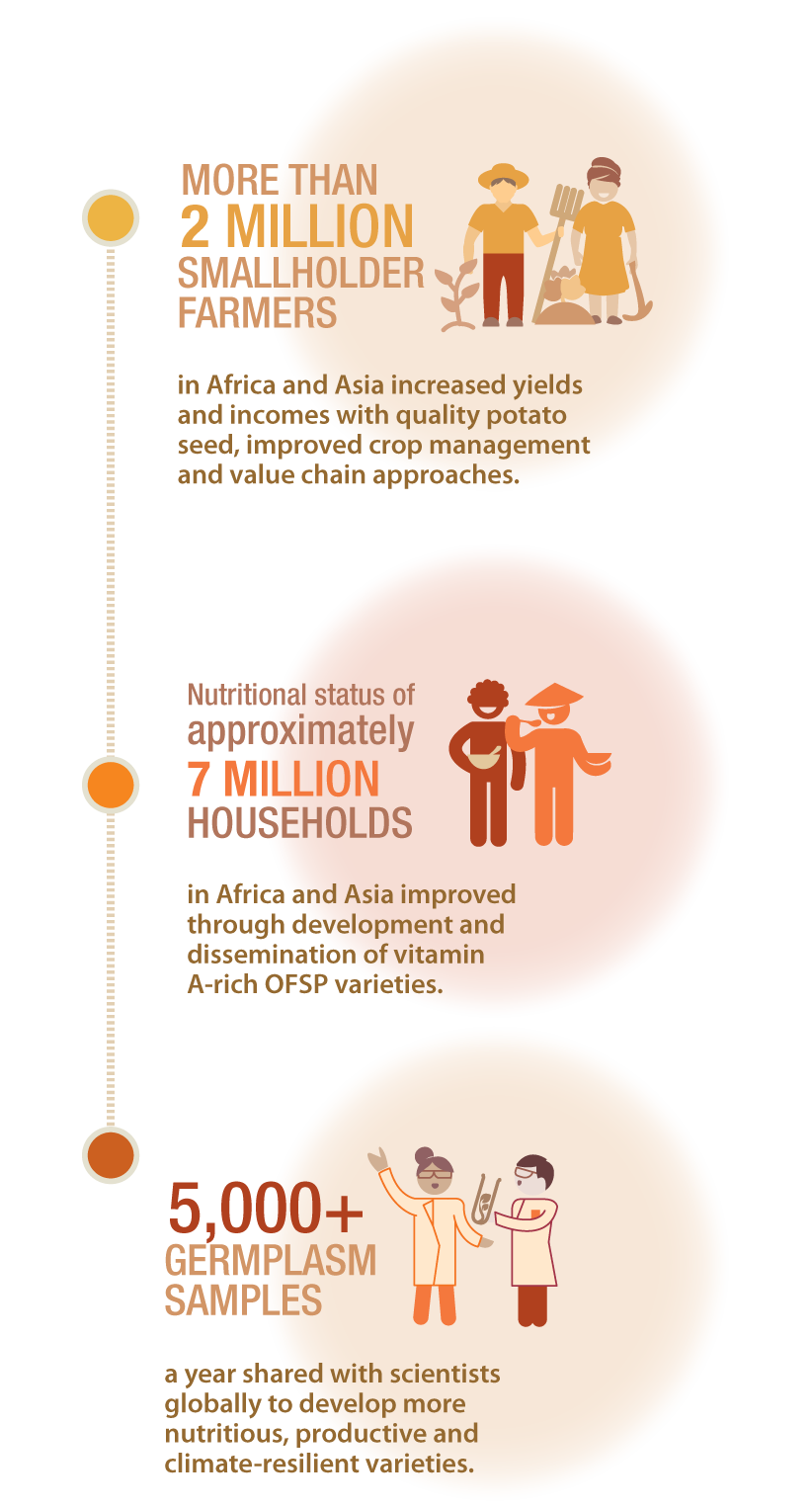Sowing self-reliance
Partnering with the humanitarian sector for nutrition and climate resilience
The United Nations World Food Programme (WFP) is known for saving lives and changing lives through emergency food assistance and for working with communities to improve nutrition and build resilience. In the northern arid regions of Kenya and Uganda, these objectives converge as rural communities with few crop and livelihood options face climate threats and high malnutrition rates.
In the midst of the COVID-19 pandemic, the International Potato Center (CIP) teamed up with WFP – the 2020 Nobel Peace Prize recipient – to facilitate the cultivation and consumption of orange-fleshed sweetpotato in those regions. This crop grows well on marginal land, provides plenty of calories per hectare, and is an excellent source of vitamin A.
Vitamin A deficiency increases young children’s risk of infection and blindness. Yet just one small orange-fleshed sweetpotato, or 125 grams, can provide the vitamin A needs of a preschooler. In the past, orange-fleshed sweetpotatoes were extremely rare in sub-Saharan Africa, where farmers favor the less-nutritious white and yellow varieties, even though nearly half of children under 5 years of age are vitamin A deficient. CIP has spent more than a decade helping national programs breed and release locally-adapted varieties of pro-vitamin-A sweetpotatoes and developing strategies to get them into fields and homes.
CIP scientists in Kenya and Uganda identified drought-tolerant sweetpotato varieties that are ready to harvest within four months and helped develop supply chains to distribute planting material, while working with government and NGO partners to raise awareness of their benefits. These varieties not only have the potential to prevent vitamin A deficiency, but they can also ensure food availability when drought destroys other crops.
Building food security
CIP and WFP are leveraging each other’s experience and achievements to bring positive change to households at risk of hunger and malnutrition. CIP benefits from WFP’s presence in vulnerable communities and fragile environments, while WFP makes use of CIP’s technical and research capacity to strengthen its food systems approach for enabling farmer self-reliance and resilience.

As Lauren Landis, WFP Country Director and Representative in Kenya, observes: “With CIP’s understanding of science and technology and WFP’s relationships with communities and authorities, we have a remarkable opportunity to transform the nutritional quality, affordability and environmental sustainability of people’s diets.”
Together they are building on a decade of work through which CIP and partners reached nearly seven million households and catalyzed demand for orange-fleshed sweetpotato in Africa and Asia. In 2020, those partnerships reached over 300,000 people in six African countries and Bangladesh. Approximately 110,000 smallholder farmers in those countries sold an additional USD 25 million worth of this nutritious crop.
Reaping nutritional benefits
According to the WFP’s Josephine Mwema, orange-fleshed sweetpotato was unknown in northern Kenya before 2020, but has quickly become popular and is now part of county and national government programs to promote crop diversification and nutrition.
In northern Uganda, more than 100,000 people have learned about the crop’s nutritional benefits and how to include it in family diets. One of them is Agnes Nyana, a member of a women’s group in Omoro district that shares knowledge about childcare and nutrition. She uses CIP’s Healthy Baby Toolkit to facilitate feeding nutritious food to children under two with delicious porridge recipes that combine sweetpotato, milk, banana and peanut paste.
“Now I know how to prepare good food that is rich in protein, vitamin A and other nutrients,” she says.
According to Frederick Grant, CIP’s Uganda country manager, working with such groups and training village health providers constitute an important avenue for promoting improved nutrition with orange sweetpotato. CIP collaborates with the Ministry of Health and NGOs to work with vegetable vendors and 60 schools, which are becoming platforms for training and distributing planting material.
Kennedy Owuor, who heads WFP’s northern Uganda office, says all three approaches have potential to reduce the malnutrition caseload at the region’s clinics. “If we can take orange-fleshed sweetpotato to scale, it can play an important role in reducing undernutrition and help us move from treating malnourished children to preventing malnutrition more widely,” he affirms.
As CIP and WFP extend their collaboration to Ethiopia, Mozambique and other countries, their partnership is showing potential to foster greater food and nutrition security across the globe.


Funders: CGIAR Trust Fund donors; Foreign Commonwealth & Development Office, UK.
Partners: Andre Foods International; County governments of Baringo, Garissa, Isiolo, Samburu, Tana River and Wajir, Kenya; HarvestPlus; Kenya Agricultural and Livestock Research Organization; Lutheran World Federation; Mercy Corps; Ministry of Health, Kenya; Ministry of Health, Uganda; National Agricultural Research Organisation, Uganda; Sasakawa Africa Association; World Food Programme.
Associated CGIAR Research Programs or Platforms: Agriculture for Nutrition and Health; Roots, Tubers and Bananas.
